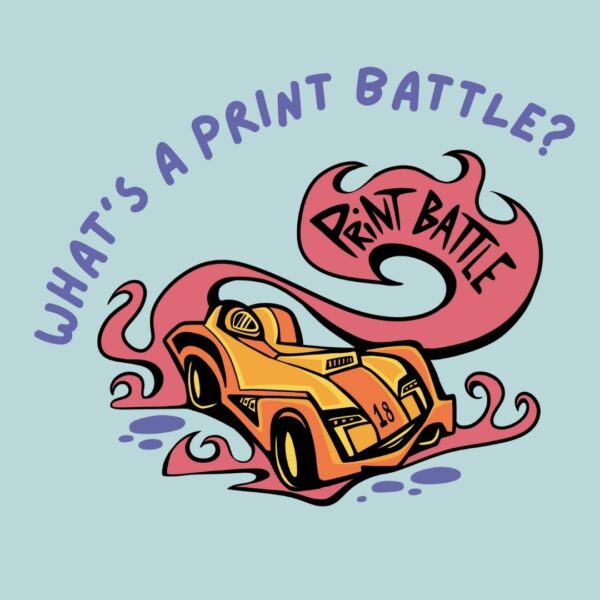Willie Cole’s sculpture, much of which consists of thousands of discarded, often obsolete objects, including his famed low-vamp womens’ pumps, expand the concept of Pop collage by a mile deploying the morphology of tribal art and design. His flat works, “scorches,” produced by burning steam-ironed profiles onto various surfaces, particularize contexts of menial labor and servitude into various 2D practices. His balancing act of autonomous media expression and research, and re-appropriation of African art motifs is one of the most prolonged counterpoises to supremacist logic by any contemporary artist. To paraphrase Cole, his intention is not to redefine or construct a vein of African art to exist on the perimeter of contemporary art, but to make African art also American art.

Willie Cole, Shoonufu Female, 2013; bronze. Photo courtesy of John Michael Kohler Arts Center.
The artist’s celebrated, untamed, shoe assemblages have always had an uncanny exchange with the graphic subtleties of his “scorched” paper works. His exhibition titled “Home Assembly,” occupies the original Kohler family’s house, which the museum was built around. One room of the house wing exhibition displays the artist’s “Five Rising Beauties.” These somber works on paper transcend the rarified objectness of his early work and stress a component of Cole’s oeuvre that fundamentally challenges the nature of gallery architecture. Human-scale pointed arches, literally pressed from stripped down, abraded, and inked ironing boards, recall slave ship forms and cultural passage. The grouping transforms a central parlor into a Gothic chapel corner of dreadful absence.
Cole integrates design from the rural and tribal and applies it improvisationally to developing transnational aesthetics. Adjacent to the “chapel” space are walls entirely papered with small rows of steam-iron shapes that call to mind textile patterns or West African mud house exteriors. It reminds viewers of the source of ethnographic traditions that evolved into global sensibilities and how the administration of Colonial economies uprooted patterns and structure along with populations of Africa and Asia.

Willie Cole, Five Rising Beauties (detail), 2012; ink on paper. Courtesy of the artist. Photo courtesy of John Michael Kohler Arts Center.

Willie Cole, Domestic Shield XV and Domestic Shield XVI, 2021; canvas, resin, and scorch. Courtesy of the artist. Photo courtesy of John Michael Kohler Arts Center.
In response, Cole absorbs popular Western motifs and myths. One can’t avoid the spirit of Jimi Hendrix’s Voodoo Chile-like constructions rocking male and female genitalia in the “Shoonuful Female” piece, as he injects fashion and eroticism into the artifactual. Running headlong into large scale photography, the contemporary Black body asserts herself in extraordinary masked figures of covert pop goddesses that advocate for the artist’s blues and jazz influences.

Willie Cole: Home Assembly installation view at the John Michael Kohler Arts Center, 2024. Photo courtesy of John Michael Kohler Arts Center.
Many sculptors who investigate cultural narratives often become extemporaneous collectors. In Cole’s case he blends an educated eye with a profound working class/skilled laborer vernacularism that merge Arcimboldo-like obsessivity with a reflective re-use covenant. Folk artists whom the museum is designed to support often produce work from abandoned curiosities. Cole combines that with a desire for multiple materials, processes and technology – high and low. His projects somehow manage to unite a dynamic performative social document that turns formal and conceptual expectations of craft on its head.
Willie Cole’s works are not fetishes, although they play on the West’s sexualized and monetized notions of wildness and ornamentation. His affinity for exotic triggers is balanced by a multicultural panorama of sight and sound and a deliberate extemporization of meticulous craft evolution. Jazz history and its relation to modern art is not lost in his unique blend of autobiography and ancestral community.
Showing contemporary cross-cultural art in a Wisconsin industrialist’s 19th century Italianate home, which has already been bracketed and recontextualized by its attachment to an institution devoted to vernacular art, installation, and engineering technology, is more than remarkable.
Look for my Newsletter this week on Chicago master Ray Yoshida https://pencilbooth.com/subruralkrainak
- Sub-Rural #49, Intuit Art Museum Redux - June 2, 2025
- Sub-Rural #49, Caroline Kent - May 1, 2025
- Sub-Rural #48, Craig Drennen at The Suburban - April 2, 2025




